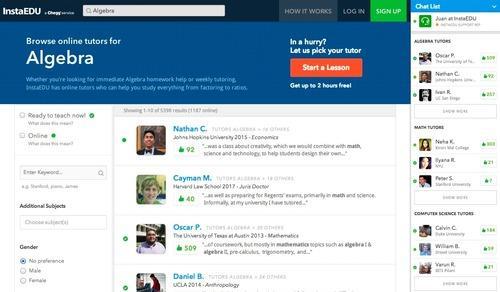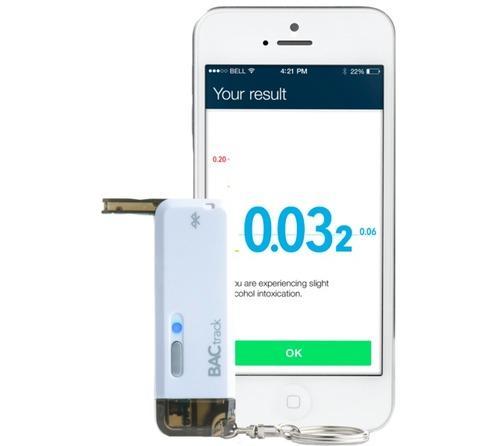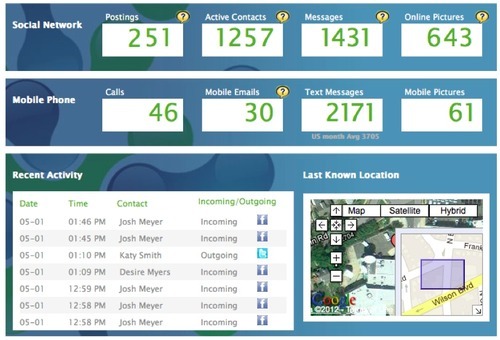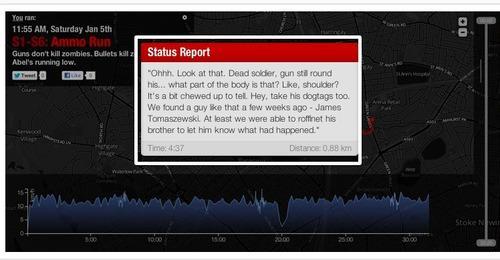Being a parent is a total bait-and-switch. Your kids start out helpless and adorable, gurgling bundles of ceaseless wonder. You are a god in their eyes, powerful and wise beyond knowing.


(InstaEDU)

(Moj.io)

(DriveScribe)

(BACtrack)

(VolunteerMatch)

(uKnowKids)

(ZombiesRunGame)
And then, one day, the transformation happens. They turn into teenagers. Everything you thought you knew about them is wrong. Overnight you became the worst human being on the planet. If only you would just disappear (leaving behind a fully stocked refrigerator and the keys to the car) all their problems would melt away.
Of course, there are some benefits to having teenagers in the house. By the time they’re 13 they’re big enough to help carry groceries from the car (provided you can pry them off the couch). They’re intellectually mature enough to engage you in lively debate (assuming you can persuade them to look up from their phones). And they eventually turn into interesting and even charming adults (or so I am told).
Read: 5 Mobile Apps That Should Scare the Pants Off Parents
Mostly, though, it’s a struggle. As a parent of teens, you need all the help you can get. Here are seven items you should be sure to pack in your survival kit:
1. Homework helper.Beyond basic algebra, my knowledge of math falters. I’m even more clueless when it comes to science. That’s why I’m grateful for online video services like InstaEDU, which matches high school students with college- and graduate-level tutors from top universities.

(InstaEDU)
Enter the subject where your kid needs help, and InstaEDU displays a list of tutors with expertise in that field. Your teen can view the tutors’ profiles, chat with them to see if they’re sympatico, then find one who’s available to answer her questions right now via a video hookup. The first two hours are free, and it costs 40 cents a minute thereafter.
2. A silent co-pilot.Has your teen driver got too much lead in his Keds? Plug a monitoring device into the car’s on-board diagnostics port (OBD II), and it can record how fast and/or recklessly he’s driving and then send a report to your phone that you can show him the next time he begs for the keys.

(Moj.io)
Most OBD monitors let you set up geofences, so you can get a text alert when he leaves home and another when he arrives at school, a status update as to your vehicle’s health, and regular snapshots of the car’s location throughout the day.
Read: How to Monitor Your Kids Without Turning into the NSA
Some devices, such as Automatic, rely on the GPS in your teen’s smartphone; others, such as Zubie and Mojio (available next month), have the GPS built in. Prices start around $100; some also charge a monthly subscription fee for wireless data.
3. Texting blockers.According to the National Highway Safety Administration, teens arefour times more likely to get into an accident while using their phones to talk or text. Nip that in the bud by installing an app that detects when the car is in motion, locks out the keyboard, and sends an auto-text saying the recipient is driving and will respond later.
Read: When Should You Buy Your Child a Smartphone?
The good news is that there are a mess of Android and BlackBerry apps that can do this — like DriveSafe.ly, Drive Safe Mode, orDriveScribe, to name just a few — for prices ranging from free to a few dollars a month. AT&T, Sprint, and Verizon also offer their own free anti-texting apps for Android.

(DriveScribe)
The bad news: There’s currently no iPhone app that will prevent your kids from texting while driving, though a company called TXT Shield is hoping to get one approved by year-end. A recently uncovered Apple patent suggests that this feature might be built into a future version of iOS.
4. A breathalyzer.The next time your high schooler comes home a little wobbly from a party, have her blow into the BACtrack Vio ($50) or the Alcohoot($100) before you launch into a lecture on the dangers of teen drinking. Both devices gauge your teen’s blood alcohol level and send it to an app on your phone. Nothing heads off bald-faced denials like some cold, hard numbers.

(BACtrack)
Just be careful not to give the thing to your teens, lest they decide to use it for a “How high can we blow?” drinking game.
5. A way to do some good.Many high schools require students to log a minimum number of volunteer hours in order to graduate. And you surely wouldn’t mind getting your teenager out of your hair for a few hours each week. Sites like VolunteerMatch connect able-bodied youth with nonprofits that need their help.

(VolunteerMatch)
Your teen gets to pick an area he’s interested in, whether it’s working with animals or in the arts, helping his elders or focusing on environmental issues. Many opportunities are virtual, so teens can do them via the Net.
6. A mobile bodyguard.If something’s amiss with your adolescents besides the usual teen angst, you might want to take a closer look at their phones. They could be the victim of a bully, or bullying someone else. They could be spending all their time watching YouTube videos when they claim to be studying. Or they might be sharing (ahem) candid photos that could come back to bite them later.

(uKnowKids)
Apps like TeenSafe, Mobile Guardian, and uKnowKids Mobile all give you a window into your teenager’s secret mobile life, letting you monitor the texts she sends and receives, the webpages she visits, the apps she downloads, and more. Costs range from $4 to $15 a month.
Read: Spying on Your Kids’ Phones, for Their Own Good
If you decide to go this route, however, I recommend full disclosure. Don’t be a spy. Telling your kids you’re monitoring them — and relaxing some restrictions after they’ve demonstrated good behavior — is usually the best way to keep them on the straight and narrow.
7. Zombies.Struggling to get your perpetually horizontal teenager from exercising something other than his thumbs? It may be time to deploy a clutch of mindless zombies.

(ZombiesRunGame)
In the immersive mobile fitness app “Zombies, Run! 3,” your otherwise lethargic teen must keep moving to stay ahead of the staggering hordes, gathering water and other critical supplies in an effort to save what remains of civilization. The farther and faster he runs, the better humanity’s chance for survival. If this $4 download won’t inspire him to get off the couch, he might be a zombie himself.
Comments
Post a Comment